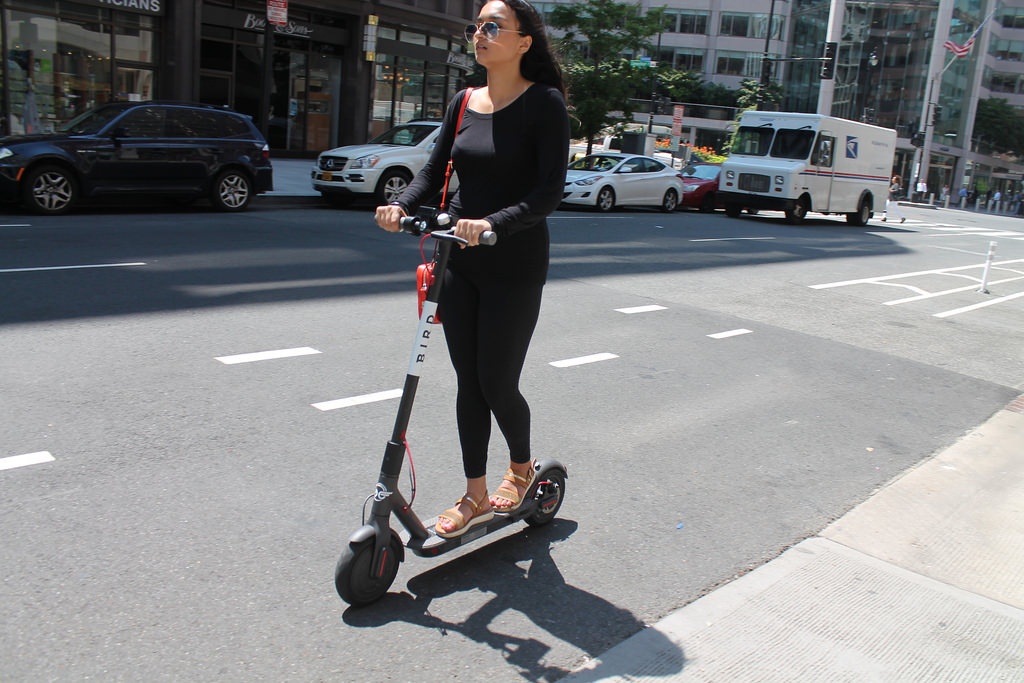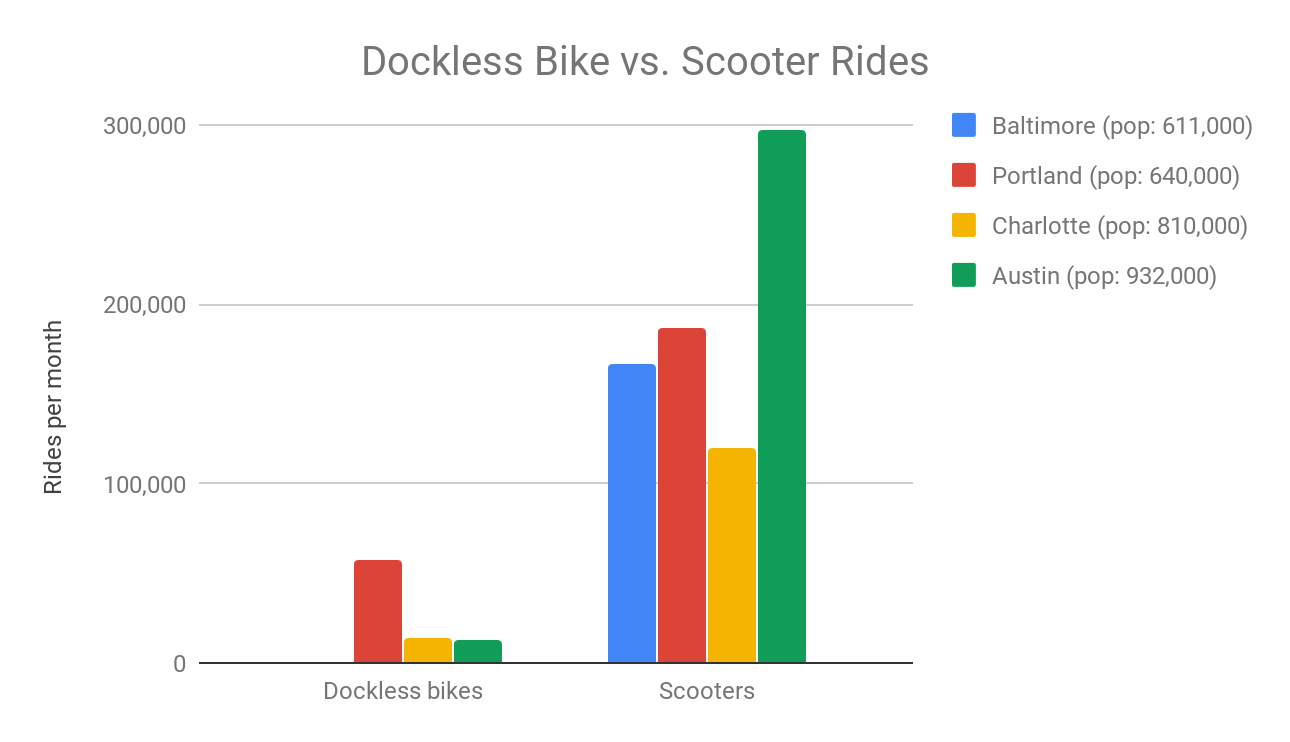
Small, personally-operated mobility options, like bikes and scooters, have highlighted a growing demand in urban areas for convenient, inexpensive alternatives to cars. However, following two high profile fatal crashes involving e-scooters and vehicles in Dallas and Washington, DC, media coverage (and the public) has been heavily focused on the safety of these two-wheelers. Some have even characterized injuries associated with the popularity of scooters as a “public safety crisis”, and a lawsuit was filed on behalf of pedestrians injured by scooters in California, suing scooter companies for negligence. Some cities have moved to restrict maximum scooter speeds, like Washington, DC, which just recently limited speeds to 10 miles per hour.

This is an overreaction that neglects putting scooter safety into perspective. Riding an e-scooter does carry some level of risk, but those risks pale in comparison to those associated with driving a car, or sharing the streets with cars. Despite the increases we’ve seen in cycling, walking, and scooters in many North American cities, the majority of urban roads are designed for vehicles often traveling at high speeds. Road crashes are the leading cause of death among 15-29 year olds worldwide, resulting in over 3,000 deaths on average per day. Until we have streets designed for all modes that actually use them: bikes, scooters, buses, pedestrians, and cars, high numbers of crashes and fatalities will continue to be the norm. Like cyclists, scooter users are often forced to ride in traffic alongside cars or on the sidewalk alongside pedestrians. In fact, capping speeds such as DC has done may actually make scooter riding less safe, since scooters won’t be able to keep pace with cyclists, and will likely be forced out of bike lanes and onto sidewalks where they intrude on pedestrian space.
The Rapid Rise of E-Scooters
Since their launch in late 2017, dockless electric “kick” scooters have sparked a range of public responses from nostalgic glee, to concerns for safety, to outright hatred. After raising significant venture capital funding, Bird was the first electric scooter company to launch and, over the next few months, several existing dockless bikeshare companies began to pivot their business models to focus primarily on e-scooters. At least a half dozen other e-scooter companies emerged during this time.
Uptake of e-scooters in the US happened fast, generating a 3.6% adoption rate (the percentage of people who have tried the service) in less than 12 months, compared to docked bikeshare schemes, which show a 13% adoption rate after eight years. Compared to dockless bikes (excluding pedal assist offerings), dockless scooters have generated, on average, significantly more total trips, as shown in the chart below, and more trips per vehicle per day.

Despite e-scooter companies modeling their business after bikeshare, these trip numbers make the economics of e-scooter operation more viable than dockless bikes, with each scooter paying for itself in a matter of weeks (4-8 by some estimates) instead of months. At this level of return, investors are keenly interested in the success of scooters, and continue to pump billions of dollars of funding into the industry. In fact, after less than one year of operations, Bird became the fastest company ever to reach a valuation of $1 billion (known in the venture capital world as a “unicorn”) – faster than Uber, Facebook, Twitter and other tech giants. Concerns abound, however, about the long-term sustainability (from a profit perspective) of the private scootershare and bikeshare business models, particularly when maintenance, charging, rebalancing and other operating costs associated with high-quality service are taken into account.
By the later half of 2018, scooter companies began eyeing markets outside of the US. Lime operates in six European cities, two cities in New Zealand, and launched in Mexico City in October. A Mexican scooter company, Grin, also provides service in Mexico City. Bird operates in six European cities including London, Madrid and Paris, as well as in Israel.
Make the Streets Safer for All Modes
Investing in infrastructure that protects scooter and cyclists is key to supporting and growing these car alternatives, as is clearly communicating to users safe riding behavior and where scooters are and are not permitted to be ridden. Recognizing that most streets, in their current car-centric form, are inherently unsafe for non-car users, cities must commit to street design that is inclusive and safe for all modes, and they must commit to enforcing these rules. Bike lanes are only useful if you can actually bike in them without the obstacles of parked cars, delivery trucks, and even pedestrians.
As cities have notoriously tight budgets, many are testing solutions for generating revenue that supports sustainable modes (and, in some cases, charging polluting modes for their negative impacts). Mexico City’s tax on TNC trips, which supports cycling and walking improvements; Portland’s use of state gas taxes to build protected bike lanes; and Chicago’s use of tax increment financing (TIF) to fund streetscape improvements including protected bike lanes are just a few examples. E-scooter operator, Bird, has offered to pay cities in which they operate to improve and build new bike lanes. Indianapolis is the first city to require all scooter operators to pay into a fund for road safety improvements that benefit cyclists and scooter riders.
Whether you think e-scooters are the best or the worst thing to ever happen to cities, their popularity demonstrates how great the need is for diverse transport options that serve all types of trips. People want to get around cities in ways other than a private car, and city governments should do everything they can to make those options convenient, safe, and connected to each other.
For more on e-scooters, check out our post: E-Scooters Could be a Last-Mile Solution for Everyone
